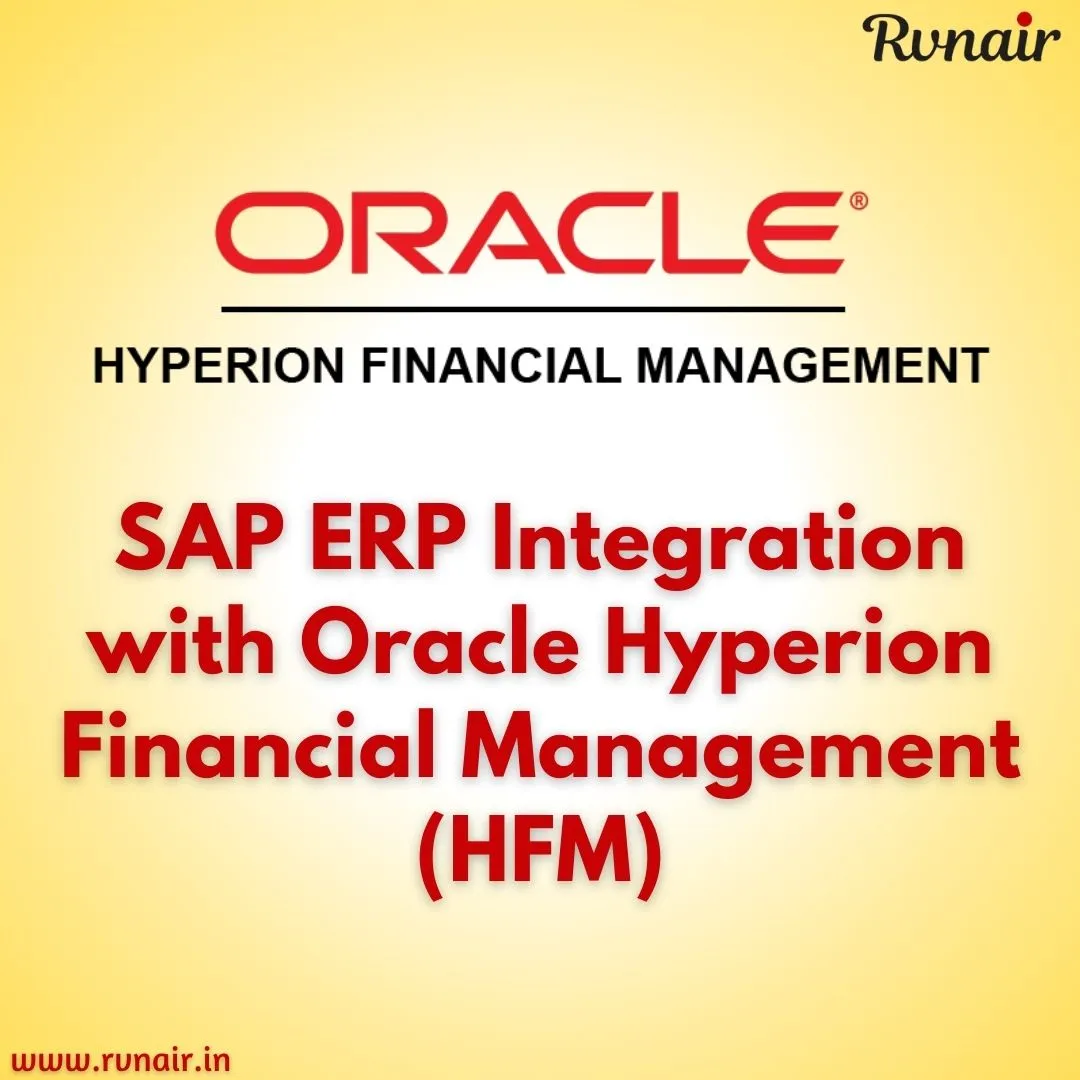
Integrating SAP ERP with Oracle Hyperion Financial Management (HFM) enables organizations to streamline their financial consolidation and reporting processes. This integration combines the strengths of SAP’s robust enterprise resource planning capabilities with HFM’s powerful financial management and reporting features. The result is a cohesive, efficient system that enhances financial accuracy, compliance, and decision-making. This article will explore the importance of integrating SAP ERP with HFM, the methods of integration, and the benefits derived from this integration.
Importance of Integrating SAP ERP with HFM
Unified Financial Reporting:
- Integration ensures that financial data from SAP ERP systems is consistently and accurately consolidated in HFM, providing a unified view of the organization’s financial status.
Enhanced Data Accuracy:
- Automating the transfer of data between SAP ERP and HFM reduces the risk of manual errors and ensures data integrity, leading to more reliable financial reporting.
Regulatory Compliance:
- Integration helps organizations comply with various regulatory requirements by providing accurate and timely financial reports that meet legal standards such as GAAP, IFRS, and local regulations.
Improved Efficiency:
- Streamlining the data flow between SAP ERP and HFM minimizes the need for manual data entry and reconciliation, saving time and resources.
Better Decision-Making:
- Access to consolidated and accurate financial data enables management to make informed strategic decisions, improving overall business performance.
Methods of Integrating SAP ERP with HFM
Several methods can be employed to integrate SAP ERP with HFM, depending on the organization’s specific needs and existing IT infrastructure. These methods include:
Flat File Integration:
- This method involves exporting financial data from SAP ERP into flat files (CSV or Excel) and then importing these files into HFM.
- It is a straightforward approach but can be labor-intensive and prone to errors if not managed correctly.
Middleware Integration:
- Middleware solutions like Oracle Data Integrator (ODI), SAP BusinessObjects Data Services (BODS), or Informatica can be used to automate and manage data transfer between SAP ERP and HFM.
- Middleware acts as an intermediary, ensuring data is accurately extracted, transformed, and loaded (ETL) into HFM.
Direct Database Integration:
- In this method, direct connections between SAP ERP databases and HFM are established, allowing for real-time or scheduled data synchronization.
- This approach requires more complex setup and maintenance but offers high efficiency and data accuracy.
Web Services and APIs:
- Using web services and application programming interfaces (APIs), SAP ERP can communicate directly with HFM to exchange data.
- This method is flexible and scalable, supporting dynamic data integration and real-time updates.
Steps for Integrating SAP ERP with HFM
Assessment and Planning:
- Conduct a thorough assessment of the current financial systems, data flows, and integration requirements.
- Develop a detailed integration plan outlining the objectives, methods, and tools to be used.
Data Mapping:
- Map the data fields between SAP ERP and HFM to ensure that all necessary financial data is accurately transferred and correctly interpreted by HFM.
- Define transformation rules to convert SAP ERP data into the required HFM format.
Selection of Integration Tools:
- Choose the appropriate integration tools or middleware based on the organization’s needs, IT infrastructure, and budget.
- Ensure that the chosen tools support the required data formats and volumes.
Setup and Configuration:
- Configure the SAP ERP and HFM systems to facilitate data exchange.
- Set up data extraction, transformation, and loading processes in the chosen integration tool.
Testing:
- Conduct thorough testing to ensure data is accurately transferred between SAP ERP and HFM.
- Perform data validation and reconciliation to verify the integrity and accuracy of the integrated data.
Deployment:
- Deploy the integration solution in the live environment.
- Monitor the integration process to ensure it runs smoothly and addresses any issues that arise.
Maintenance and Support:
- Regularly maintain and update the integration solution to accommodate changes in data structures, business processes, or regulatory requirements.
- Provide ongoing support to address any technical issues and ensure the integration continues to meet business needs.
Benefits of Integrating SAP ERP with HFM
Timely and Accurate Financial Reporting:
- Automated data transfer ensures that financial reports are generated quickly and accurately, facilitating timely decision-making and compliance reporting.
Operational Efficiency:
- Streamlined integration processes reduce the time and effort required for manual data entry and reconciliation, freeing up resources for more strategic activities.
Enhanced Data Integrity:
- Consistent and automated data transfer minimizes the risk of errors, ensuring that financial data is reliable and accurate.
Scalability:
- Integration solutions can be scaled to accommodate growing data volumes and evolving business needs, supporting the organization’s growth and expansion.
Improved Financial Analysis:
- Access to consolidated financial data from multiple sources allows for more comprehensive financial analysis and better insights into business performance.
Regulatory Compliance:
- Accurate and timely financial reporting supports compliance with various regulatory requirements, reducing the risk of legal and financial penalties.
Integrating SAP ERP with Oracle Hyperion Financial Management is a strategic initiative that enhances financial accuracy, efficiency, and compliance. By leveraging automated data transfer and robust integration methods, organizations can achieve a unified view of their financial status, supporting better decision-making and improved business performance. Whether through flat file integration, middleware solutions, direct database connections, or web services, the integration process ensures that financial data is accurately consolidated and reported, meeting the demands of today’s dynamic business environment.
